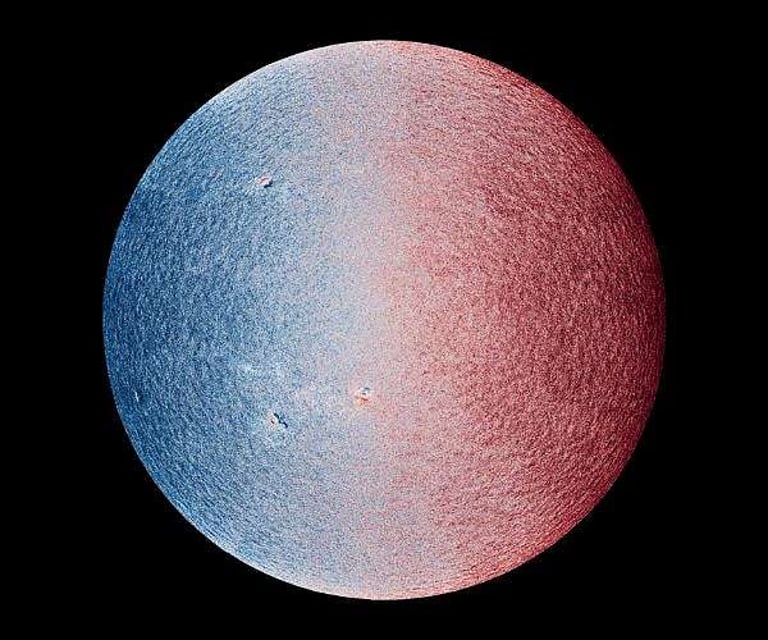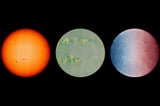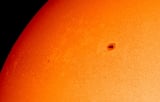Solar Orbiter Captures Unprecedented High-Resolution Sun Images, Unveils Sunspots and Dynamic Plasma
November 20, 2024
The Solar Orbiter mission has unveiled stunning high-resolution images of the sun, providing unprecedented views of its visible surface, including intricate sunspots and dynamic plasma.
Captured on March 22, 2023, these images were taken from a remarkable distance of 46 million miles (74 million kilometers) using advanced instruments like the Extreme Ultraviolet Imager and the Polarimetric and Helioseismic Imager.
Among the images released, the magnetogram from the Polarimetric and Helioseismic Imager illustrates the magnetic field's intensity in sunspot regions, with red indicating outward fields and blue representing inward fields.
As the sun has reached its solar maximum, the peak of its 11-year activity cycle, increased solar flares and coronal mass ejections pose potential disruptions to power grids, GPS, aviation, and satellites on Earth.
Current missions, including the Solar Orbiter and NASA's Parker Solar Probe, are tackling fundamental questions about the sun, such as the origins of solar wind and the reasons behind the corona's high temperatures.
The Solar Orbiter's objective is to enhance our understanding of solar wind, which is crucial for explaining phenomena like auroras on Earth and other planets.
These new images not only improve our understanding of the sun's corona and photosphere but also set the stage for future observations that will focus on the sun's poles, which remain largely unexplored.
This latest release builds on previous images from March 7, 2022, and sets the groundwork for more efficient processing of similar high-resolution mosaics in the future.
Daniel Müller, the Solar Orbiter's Project Scientist, highlighted the significance of studying the sun's magnetic field to comprehend its dynamics and influence on solar activity.
The PHI team has developed innovative image processing techniques that will allow them to produce high-resolution mosaics of the sun's surface biannually, enhancing the study of solar activity.
The extraordinary images captured by the Solar Orbiter not only advance scientific understanding but also inspire contemplation about cosmic phenomena and humanity's place in the universe.
The images reveal granules—large turbulent cells of plasma about 620 miles (1,000 kilometers) wide—covering the sun's surface, except in sunspot areas.
Summary based on 9 sources
Get a daily email with more Science stories
Sources

Newsweek • Nov 21, 2024
Solar Orbiter Snaps Sharpest Ever Images of the Sun
Smithsonian Magazine • Nov 21, 2024
Check Out the Highest-Resolution Images Ever Captured of the Sun's Entire Surface
New Scientist • Nov 20, 2024
See the sun revealed in stunning glory by Solar Orbiter pictures